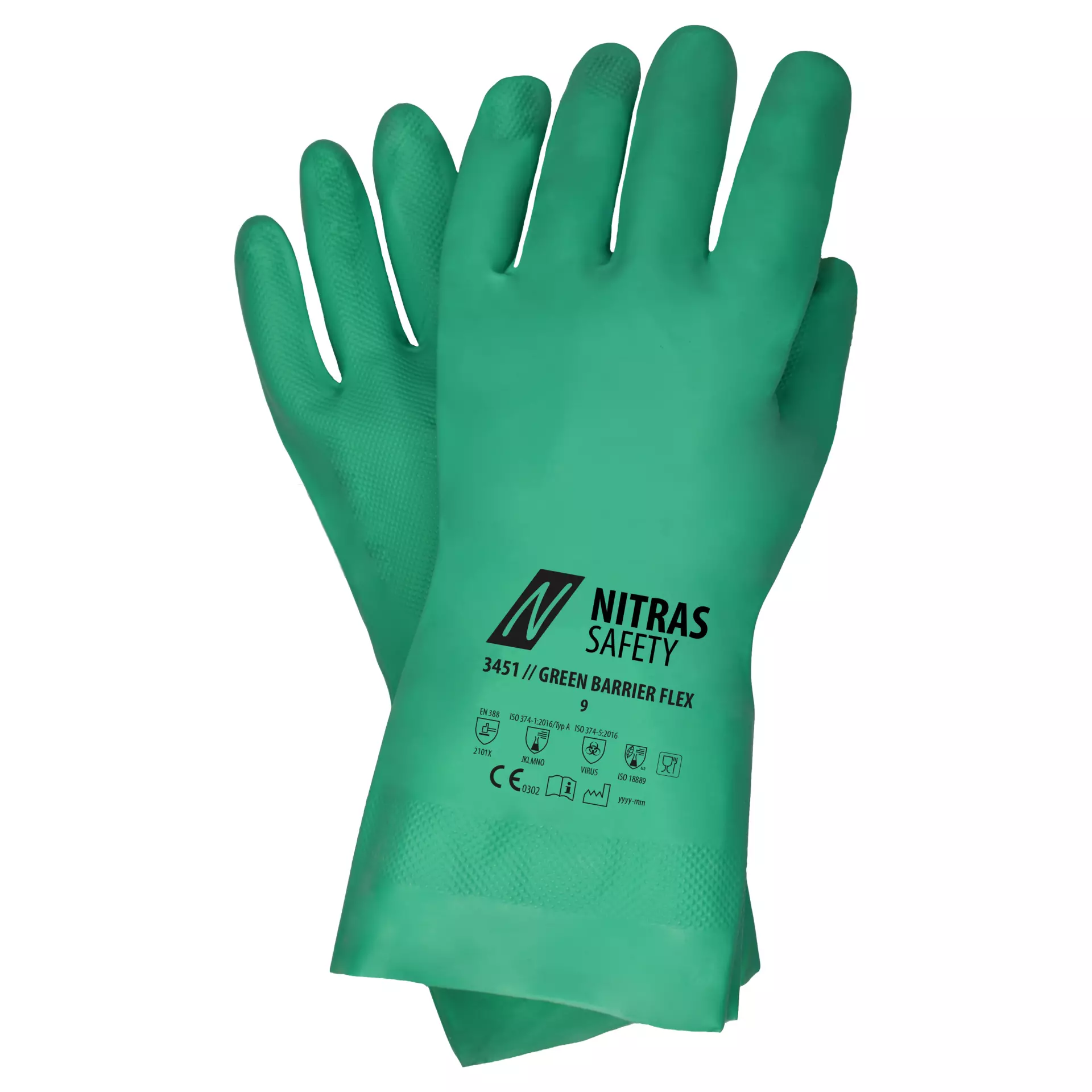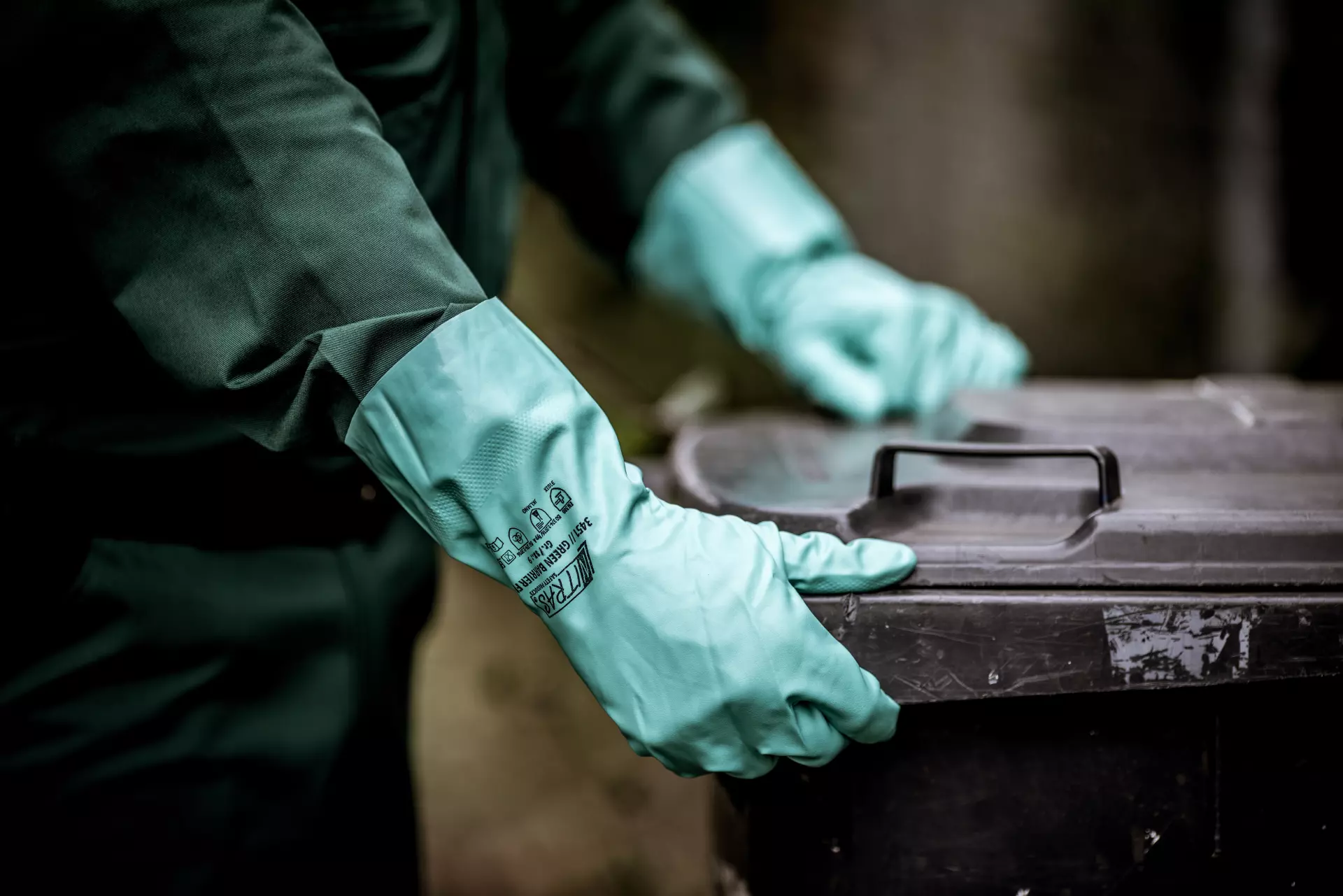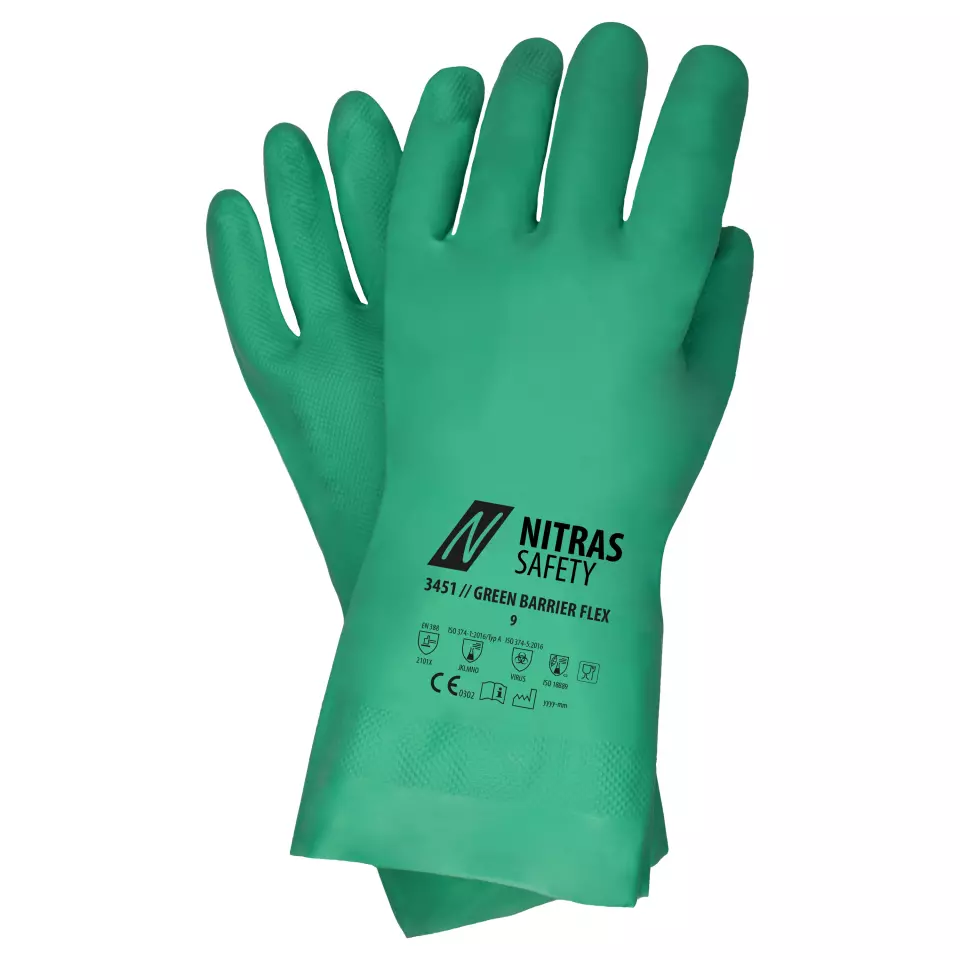

Features You'll Love

Palm Material · Nitrile
Grip Finish · Textured
The material used on the palm side of the glove, affecting grip, durability, protection level, and comfort during use.
The surface texture or coating on the palm and fingers that determines how securely the gloves can grip tools, materials, and surfaces during work tasks.

Cuff Style · Open
EN 388 · Tear Resistance Level 0, Puncture Resistance Level 1
Determines how the glove secures around the wrist, affecting fit, protection from debris, and ease of putting gloves on and taking them off.
Offers no rated protection against the material tearing apart.
Provides basic protection against punctures from blunt objects like splinters, not sharp points like needles.
Nitras
GREEN BARRIER FLEX Chemical Protective Gloves, Green, 12 pairs
GREEN BARRIER FLEX Chemical Protective Gloves, Green, 12 pairs
4.5 / 5
20,62 €
Price per 12 pairs
1,72 € / pair
Choose size
Shipping fee is 7,95 € for orders under 80,00 €
Features You'll Love

Palm Material · Nitrile
Grip Finish · Textured
The material used on the palm side of the glove, affecting grip, durability, protection level, and comfort during use.
The surface texture or coating on the palm and fingers that determines how securely the gloves can grip tools, materials, and surfaces during work tasks.

Cuff Style · Open
EN 388 · Tear Resistance Level 0, Puncture Resistance Level 1
Determines how the glove secures around the wrist, affecting fit, protection from debris, and ease of putting gloves on and taking them off.
Offers no rated protection against the material tearing apart.
Provides basic protection against punctures from blunt objects like splinters, not sharp points like needles.
Product description
Professional chemical protective gloves offering comprehensive protection against chemicals, microorganisms, bacteria, and viruses. These flock-lined nitrile gloves feature a consistent 0.35mm thickness throughout and extend 33cm in length for enhanced coverage and protection. Certified for food contact applications, they combine maximum dexterity (Level 5) with robust chemical resistance against multiple substances.
Product Features:
- Flock lined interior for comfort
- Uniform 0.35mm thickness construction
- Extended 33cm length for additional protection
- Maximum dexterity rating (Level 5)
- Food contact approved
Technical Details:
- EN 388:2016+A1:2018 (2101X) mechanical protection
- ISO 374-1:2016 Type A (JKLMNO) chemical resistance
- ISO 374-5:2016 VIRUS protection
- Passed air and water leakage tests
Recommended Applications:
- Food processing and handling
- Chemical handling and processing
- Applications requiring microorganism protection
- Environments with bacterial and viral exposure risks